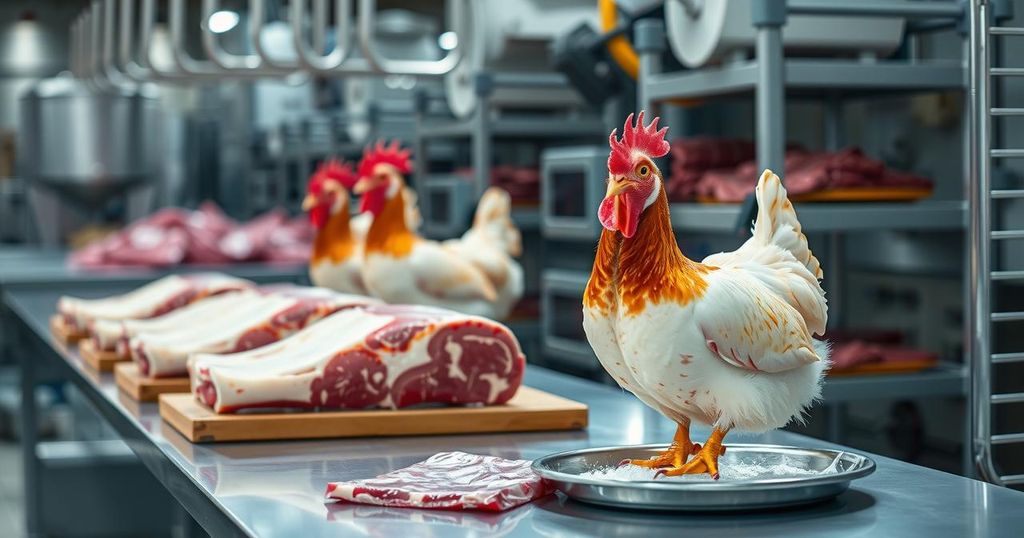Navigating the Future: Innovation in Meat and Poultry Processing
The meat and poultry processing sector is experiencing a surge of innovation, driven by automation, data analytics, sustainable practices, and AI technologies. Automation addresses labor shortages while enhancing efficiency and precision in operations. Data-driven tools are crucial for maintaining food safety standards and improving traceability. With a heightened focus on sustainability, new packaging solutions are emerging, and AI optimizes operations and decision-making, preparing the industry for a sustainable future ahead.
In the ever-evolving realm of meat and poultry processing, the pulse of innovation beats strongly, driven by the dual forces of necessity and opportunity. Faced with modern challenges—such as labor shortages and environmental concerns—this industry is witnessing a technological renaissance. Key advancements, such as automation, artificial intelligence, and sustainable practices, are reshaping the landscape, enhancing operational efficiency and food safety while appealing to eco-conscious consumers.
Automation and robotics are not merely trends but vital strategies that breathe efficiency into processing operations. As skilled labor becomes scarcer, automated systems emerge as champions, from robotic butchering, which achieves remarkable precision in meat cuts, to high-speed packaging solutions that uphold hygiene and consistency. According to PMMI’s white paper, a significant portion of industry leaders—49%—rank automation as a pressing priority, indicating a collective shift towards robotics to navigate workforce challenges.
Turning to data-driven decision-making, the integration of advanced analytics and IoT technology is critical in fortifying food safety standards. By embedding sensors throughout processing plants, real-time data on temperature and contamination is captured and scrutinized using AI algorithms, preempting hazards before they escalate. Furthermore, the adoption of blockchain technology enhances traceability across the supply chain, allowing consumers to feel secure in the origins of their food-like protagonists in a narrative of transparency and accountability.
Meanwhile, as environmental consciousness becomes deeply rooted in consumer behavior, sustainable packaging material gains traction within the industry. Biodegradable and compostable options are stepping in to eclipse traditional plastics, while innovations like edible packaging cast waste aside completely. Active packaging technologies extend the shelf life of products, mitigating food waste—a growing concern espoused by 35% of industry participants as noted in PMMI’s findings.
Artificial intelligence and machine learning are weaving their way into the very fabric of meat and poultry processing, optimizing operations through deep data analyses that reveal patterns and trends invisible to the human eye. Predictive maintenance systems enabled by AI preemptively tackle equipment issues, minimizing downtime while prolonging machinery life. Furthermore, machine learning assists in supply chain optimization, balancing demand forecasting and inventory management to heightened levels of precision, reducing waste at every turn.
As the industry stands on the brink of a transformational age, innovation reigns supreme. The marriage of automation, data analytics, sustainable practices, and AI-driven solutions not only strengthens operations but also enhances the quality of meat and poultry products available to consumers. Embracing these trends will prove pivotal for industry players as they navigate a competitive and rapidly changing landscape, cultivating trust, sustainability, and exceptional quality in an exciting new chapter for the meat and poultry sector.
The meat and poultry processing industry is a dynamic sector renowned for its continuous push towards innovation. This quest for improvement is fueled by the need for food safety, operational efficiency, and adaptability to shifting consumer preferences. Recent advancements in technology have birthed transformative approaches that reimagine processes from meat cutting to packaging. Automation and AI play crucial roles, addressing labor shortages while promoting sustainability—a cornerstone of modern consumer values. The industry’s increased focus on data management and transparency underscores a broader commitment to safety and environmental responsibility, making this an exciting era for meat and poultry processing.
In summation, the meat and poultry industry is undergoing a significant technological transformation characterized by notable advancements in automation, data-driven safety measures, sustainable packaging, and artificial intelligence. These trends are not only streamlining operations but are also positioning the sector to respond to the increasing demands for quality and sustainability from consumers. As the landscape evolves, the future looks promising for meat and poultry processing, where efficiency and responsibility work hand in hand to shape a competitive market.
Original Source: www.meatpoultry.com




Post Comment